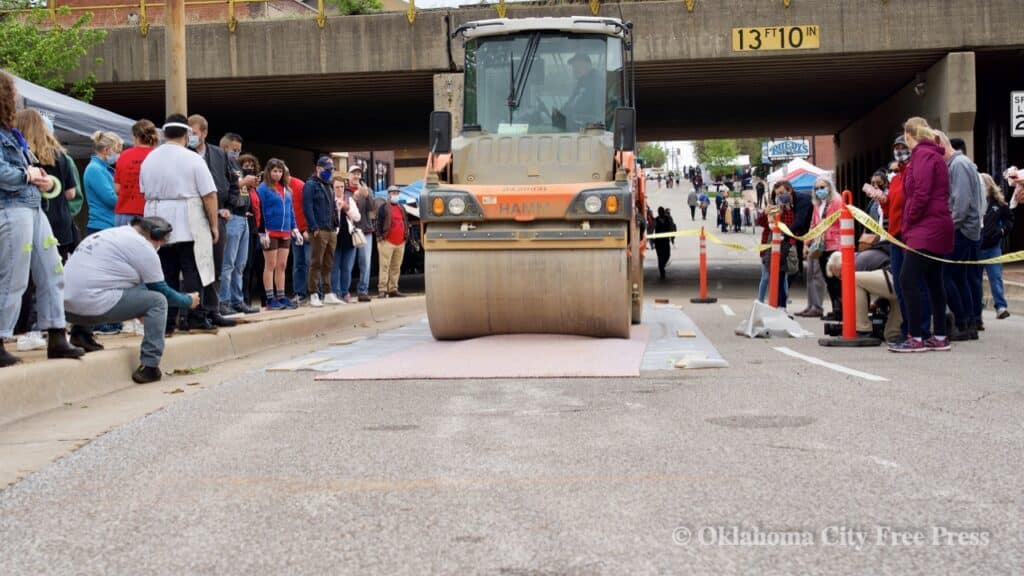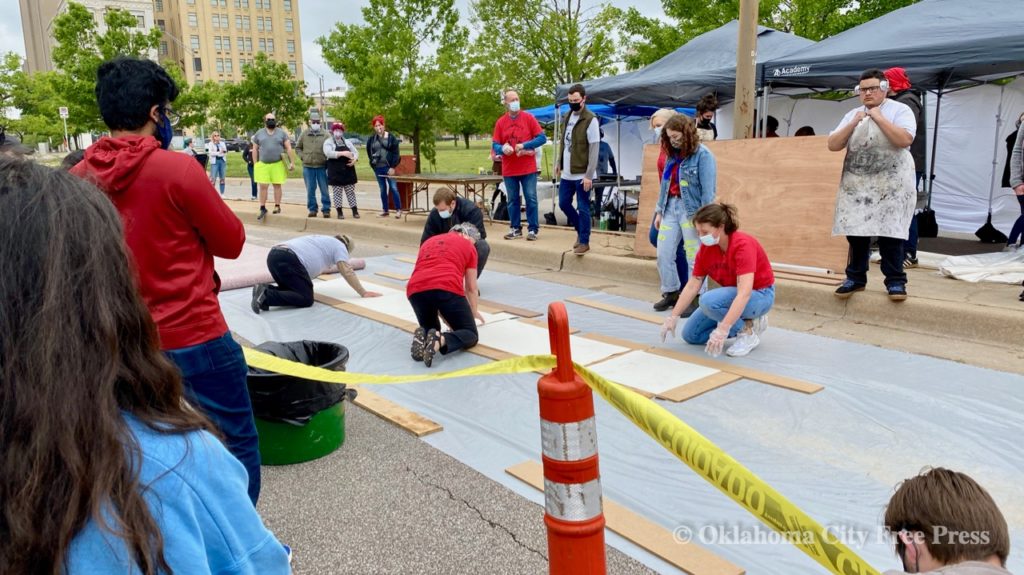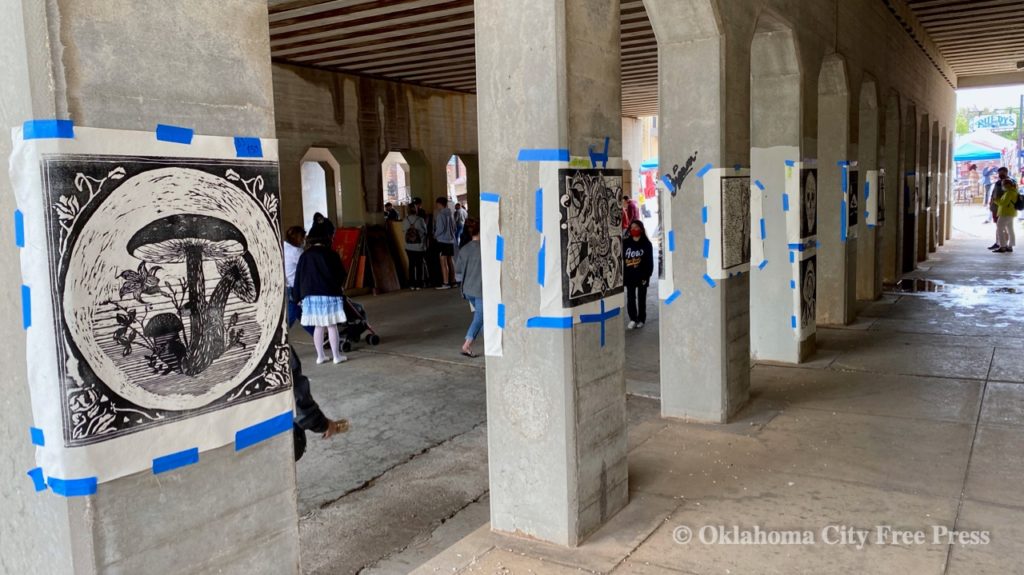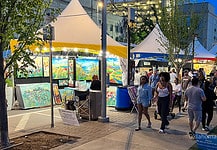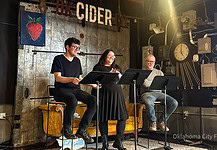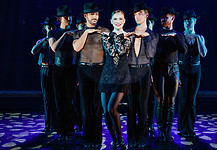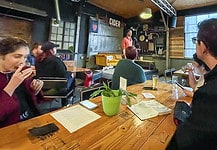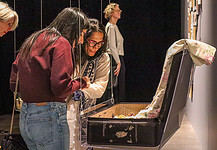Last Updated on April 24, 2021, 9:46 PM | Published: April 24, 2021
“And now returning after all the years to crawl the paths most others had forgotten. My second coming into deep second, that frontier valley between two frontier hills, that world bounded by Walnut and Byers.” — Ralph Ellison in a 1953 letter to Albert Murray
Poet and novelist Ralph Ellison was remembering the neighborhood where he was born and raised. It was what the Black residents of Oklahoma City called “Deep Deuce,” and what he called home. The streets that he recalled still remain, but their contents have evolved with the city.
Under legal segregation, Deep Deuce was originally the Black downtown and became the Harlem of Oklahoma City, one of the most important sites in jazz history and development west of the Mississippi according to Oklahoma History Center publications.
The neighborhood was bisected to make room for I-235, and for decades, it languished as its residents moved to other parts of Oklahoma City. Its eventual renewal, driven by a property boom in the 405, has often been divorced from its historical context.
On Saturday, however, the 2021 Steamroller Festival explored the future of Deep Deuce as a return to its artistic origins.
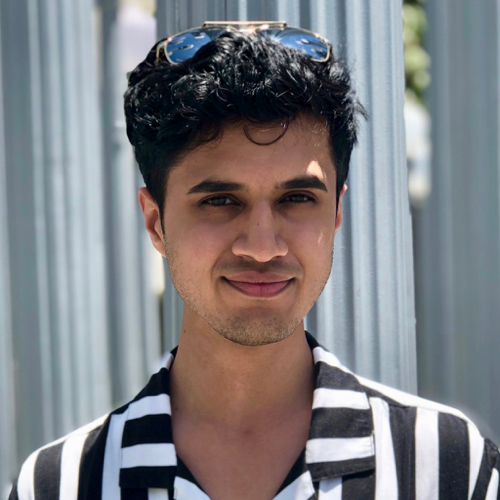
The Arts
with Devraat Awasthi
Mission
The festival was launched by Artspace at Untitled, a fresh and inspiring gallery in Deep Deuce. Its building retains some of the older charms of the city, with refined red brick and some classical Art Deco accoutrements of Oklahoma City’s heyday. It looks out of place amongst the trendy new apartment buildings but strives to make itself part of the community.
“A lot of people don’t know what’s happening on this side of the railroad tracks,” says Fernando Calvillo, the Design Manager at Artspace. “I think that having the Steamroller Festival and having a lot of businesses and a lot of organizations helping us, hopefully, they’ll get the word out and people can know more about our mission and what we do.”
Artspace manages a mentorship program for Oklahoma City students as part of its mission to serve the community around it, and the Steamroller Festival is where those students see their woodblocks, a year’s worth of work, become prints.
“For the kids that don’t necessarily have mentorship at home, or don’t have someone to be around them and help them, it really does mean the world, especially to get job training,” says Anna Vittoria Conner, Artspace’s Education Manager. “For the kids that do have good mentorship at home, it’s just a good opportunity to push their art forward.”
Festival returns
The Steamroller Festival’s place as one of the Big Three art festivals in Oklahoma City was assuredly fixed this weekend. Deep Deuce, which had spent most of the past year in a slumber, roared back to life as artists from across the state gathered to make themselves known to the city.
From silk scarves to candles to books to paintings and performing arts, the variety of art to be seen at the Steamroller Festival was a delightful reminder of the years past, when The Paseo, another historic district in OKC, would be chocked full of tents and people.
The crowd remained sparse at the festival, and hand sanitizer was prominently placed at every possible juncture. But the growing itch to return to normal (mistaken or not) was palpable as color flooded the streets on an otherwise cloudy day. Even the Oklahoma City Thunder sent their regards with a special appearance by Rumble the Bison.
Back together after a year
For artists, the Festival prompted both joy and disorientation.
Sara Golding, a soap and candlemaker, is also a crew member at Trader Joe’s, where Artspace maintains volunteer partnerships. “This is the first event I’ve done probably in about a year, because of everything that’s been going on,” said Sara. “It’s nice actually being able to talk to people, let them come over, see what I have and it’s just a totally different experience than selling completely online from last year.”
Coming up from Norman, the University of Oklahoma’s Print Club was also present and busy. Wesley Kramer, a graduate student, described the festival as an “interesting experience.” “We were going to do it last year, but when it got closed, we couldn’t do it, so when we heard that they were going to redo it, we decided, why not? Things seem to be going back to normal, so we really wanted to try it out.”
Abby Woodard, the Events Coordinator at Commonplace Books, came to “represent the art form of literature” at the otherwise predominantly visual art festival. She described being out after COVID-19 as “a little weird.”
“Earlier I was just listening to the noise of people talking and walking by, and it was really surreal,” said Woodard. “I hadn’t realized how long it had been since I’d heard just background noise like that.” Nonetheless, “it’s really nice though, a lot of people have been really excited.”
The mood of the artists and visitors at the Steamroller Festival reflects a phenomenon occurring nationwide, as the delight of re-opening begins to take shape along with anxiety about rejoining public events and spaces.
Artistic renewal
But, as Artspace has proven through its unyielding commitment to their community, galleries can form an integral part of a smooth reopening and artistic renewal. The relationship between galleries and their surroundings has always been tenuous, evidenced by the Deep Deuce itself.
Gentrification, often driven by the migration of artists, can drive the original inhabitants of a neighborhood out by increasing property prices and rent rates. As infrastructure promises to receive at least some attention from Congress this year, the role of Black voices in that project, and their ability to preserve their community and artistic heritage, will be closely scrutinized.
But as long as galleries like Artspace maintain and reflect an allegiance to the community, the ability of art to protect, preserve, and persevere will endure. The promise of history lives on, in the littlest of things and the biggest events.
Devraat Awasthi is an art reporter for Free Press, a full-time law student at the University of Oklahoma, and is interested in pop culture’s role in public communities.
